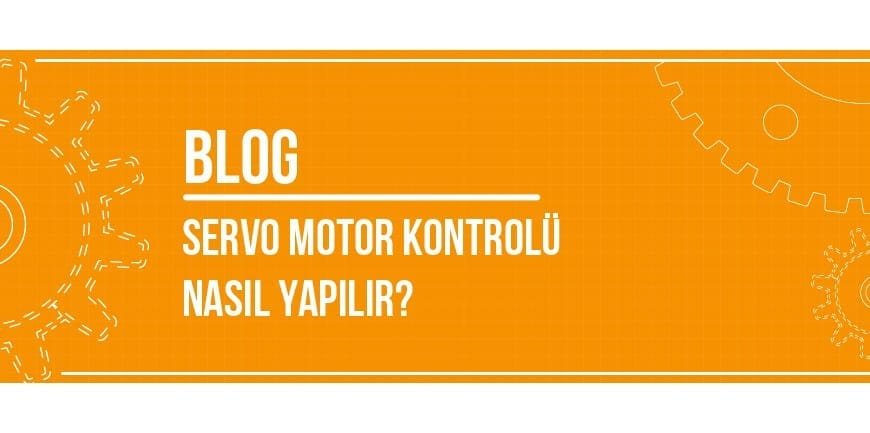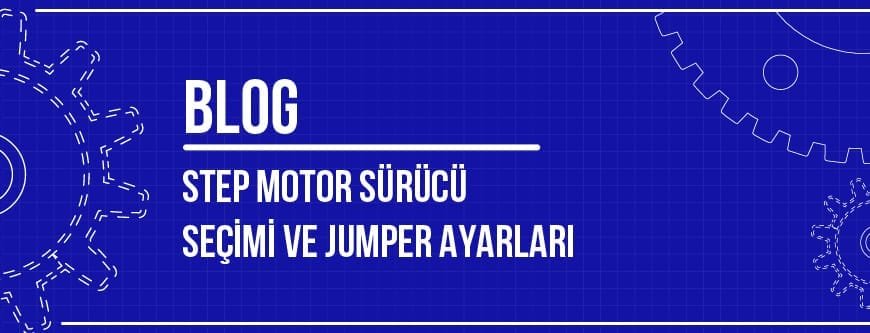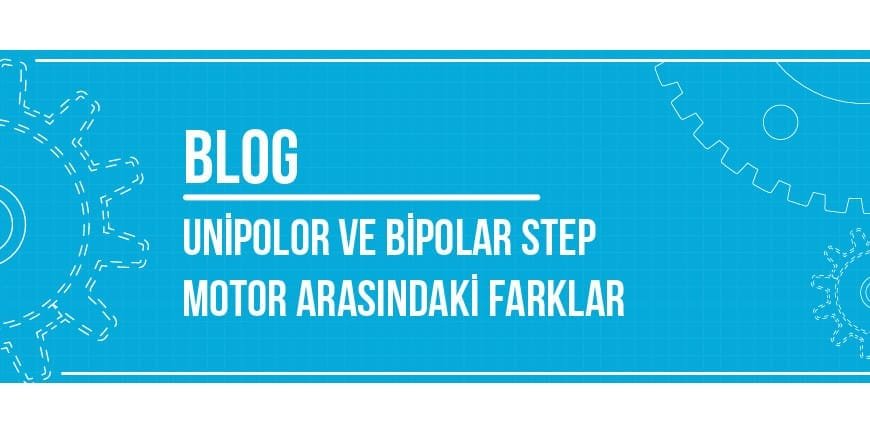
İçindekiler
Servo Motor Torque Calculation
Servo motors are one of the key components of many industrial applications that require precise positioning, speed and torque control. However, for a servo motor to operate correctly, the torque required by the system must be calculated accurately. Under- or over-selecting the torque can reduce system efficiency, as well as cause mechanical failures or waste energy. For this reason, the torque calculation process is perhaps one of the most critical engineering calculations.
In this comprehensive article, we will cover topics such as motor torque calculation, dc motor torque calculation, reducer output torque calculation, clamping torque calculation, torque speed calculation in detail with both theoretical information and examples. We will also shed light on the problems that the reader may encounter in practice by addressing common mistakes under these headings.
What is Torque?
Torque is the moment of force that makes a rotating body rotate around its axis. In mechanical systems, torque determines the rotational capacity of the system. Physically, torque is expressed as the product of the distance between the point where the force is applied and the axis of rotation. It is measured in Newton-meters (Nm) in the SI system of units and refers to the “rotational force” of the system. The greater the torque, the greater the capacity of a motor or lever to lift or rotate a greater load.
For example, imagine you are trying to remove a wheel with a lug wrench. The longer the wrench and the more force you apply, the better your chances of removing the wheel. This is a simple example of torque from everyday life. In industry, servo motors provide this torque in a precise and controllable way and find a wide range of uses from robotic systems to conveyor belts.
How to Calculate Torque and Speed?
Torque and speed calculations form the basis of system design, especially in mechanical systems powered by electric motors. This calculation is done to understand how much power the system requires, to make the right motor selection and to maximize the efficiency of the system. Torque and speed are two interdependent physical quantities. The basic equation defining this relationship:
P (kW) = (T × N) / 9550
- P: Power (kW)
- T: Torque (Nm)
- N: Number of revolutions (rpm)
This equation clearly shows how mechanical power is related to torque and speed. For example, if you want to know the torque a machine will produce when running at a certain speed, you can use this equation to evaluate its power and speed. In the same way, you can calculate the torque and speed at which the system should operate, depending on the power you need.
In practice, this calculation is quite easy to do. For example, let’s assume that a 5 kW motor system will rotate at 1000 rpm. In this case, the torque that the motor must provide is calculated as follows:
T = (9550 × P) / N = (9550 × 5) / 1000 = 47.75 Nm
This value is the minimum torque required for the system to operate with the desired efficiency. If the motor is not able to provide this torque, the system will struggle, operate inefficiently or may not operate at all.
Conversely, if the torque and rpm available in a system are known, the power that this engine will provide can also be calculated. For example, in an engine with a torque of 30 Nm and 1500 rpm:
P = (T × N) / 9550 = (30 × 1500) / 9550 ≈ 4.71 kW
This value is compared with the rated power capacity of the motor to assess whether the motor is sufficient for the system.
As a result, this formula is an invaluable tool both at the design stage and during motor selection. It is also possible to predict how the system will operate under different conditions and, if necessary, optimize these values with auxiliary elements such as reducers. The importance of such calculations increases even more in applications where precision is high, especially in servo motor systems.
Torque Calculation Formula
The most basic formula used in torque calculation is the following:
T = F × r
It’s here;
- T: Torque (Nm)
- F: Force (N)
- r: Distance of the point where the force is applied from the center of rotation (m)
This formula is often used in static systems or manual force applications. For example, this is how you calculate the torque you apply when tightening a nut. The torque increases as the force increases or as the arm on which the force is applied becomes longer.
This formula provides only a basic approach. In engine systems, since there is rotational motion, more complex calculations are required, involving power and speed. However, this formula is a critical starting point for understanding the concept of torque and is often used in engineering fundamentals.
Servo Motor Torque Calculation
For electric motors, the power of the motor (in kW) and the rotational speed (in rpm) are usually used to calculate the torque. The most common formula is as follows:
T (Nm) = (9550 × P) / N
It’s here;
- P: Engine power (kW)
- N: Number of revolutions (rpm)
- 9550: Constant coefficient (obtained from conversion of power and speed units)
With this formula, the torque value of an electric motor, such as a servo or AC motor, can be easily calculated. For example, the torque of a motor with a power of 2.2 kW and a speed of 1500 rpm:
T = (9550 × 2.2) / 1500 = 14.0 Nm. This value indicates the rotational force generated by the motor on the output shaft.
When choosing a motor, this torque value is compared to the load that the system must lift. Insufficient torque can lead to system strain and engine burnout, while excessive torque increases cost and reduces energy efficiency.
DC Motor Torque Calculation
DC motors are a type of motor that runs on direct current and are generally preferred in robotic applications. The torque calculation of these motors is done with slightly more detailed parameters:
T (Nm) = (V × I × η) / (2π × n)
It’s here;
- V: Voltage (V)
- I: Current (A)
- η: Efficiency (a value between 0.0-1.0)
- n: Number of revolutions (rpm)
In this formula, the output power is calculated by multiplying the input power of the motor (V × I) by the efficiency, and then converted to torque according to the number of revolutions. The ability of DC motors to produce high torque at low speeds makes them particularly advantageous in servo systems.
For example, the torque at 1000 rpm of a DC motor operating with 24V, drawing 3A current and 85% efficiency:
T = (24 × 3 × 0.85) / (2π × 1000) ≈ 0.0097 Nm.
As can be seen, the torque value of motors operating at low power is also limited and is therefore usually supported by a gearbox.
Gearbox Torque Calculation
Gearboxes are mechanical systems used to increase torque by reducing the speed of the motor. For this reason, geared solutions are often preferred in servo motor systems. The output torque of the gearbox is calculated as follows:
Tout = Tinput × i × η
- T-input: Engine torque (Nm)
- i: Reduction ratio
- η: Gearbox efficiency (usually between 90-95%)
In this calculation, the motor torque is increased by the gearbox ratio, but the actual output torque is found by taking efficiency into account. For example, suppose a motor with an input torque of 10 Nm is connected to a gearbox with a ratio of 1:20 and the gearbox efficiency is 90%:
Tout = 10 × 20 × 20 × 0.9 = 180 Nm
When selecting the gearbox, the correct ratio should be selected according to the output torque required by the system. Otherwise, either the torque will be insufficient or the speed of the system will drop too much.
Torque Speed Calculation
Torque and speed are directly related to power in electric motors. Therefore, if you know one, it is possible to calculate the other. The formula below gives this relationship:
P (kW) = (T × N) / 9550
This formula is used especially for adjusting the torque and speed of the engine according to the expected power of the system. In a system operating at a constant power, torque and speed are inversely proportional. That is, if the torque is increased, the speed decreases; if the speed is increased, the torque decreases.
For example, in a 3 kW system, the torque of a motor running at 1500 rpm:
T = (9550 × 3) / 1500 = 19.1 Nm Such calculations are of great importance when selecting the motor according to the dynamic requirements of the system.
Tightening Torque Calculation
Tightening torque determines how much force mechanical fasteners (screws, bolts, nuts, etc.) should be tightened. Over-tightening can damage the material, while under-tightening can cause the connection to loosen. The calculation formula is as follows:
T (Nm) = k × d × F
- k: Coefficient of friction (usually 0.2)
- d: Screw diameter (m)
- F: Clamping force (N)
For example, if a force of 2000 N is applied to an M10 bolt,
T = 0.2 × 0.01 × 2000 = 4 Nm.
This value is controlled by a torque wrench to ensure the safety of the system.
For fasteners used in sensitive equipment such as servo motors, these values must be set correctly. Otherwise the mechanical integrity of the system may be compromised.
Torque calculation is a vital engineering problem, especially in servo motor systems. In this article, we have covered each of the following topics in detail: motor torque calculation, dc motor torque calculation, gearbox output torque calculation, clamping torque calculation, and torque speed calculation. Each calculation formula addresses a different application area and by evaluating this information together, optimum system performance is achieved.
It should not be forgotten that the conditions in practice are as important as the theoretical calculations. Factors such as friction, load imbalance, sudden stops or accelerations can lead to unforeseen differences in calculations. Therefore, in practice it is always advisable to work with a factor of safety and perform system tests.
Diğer Blog Yazılarımız








